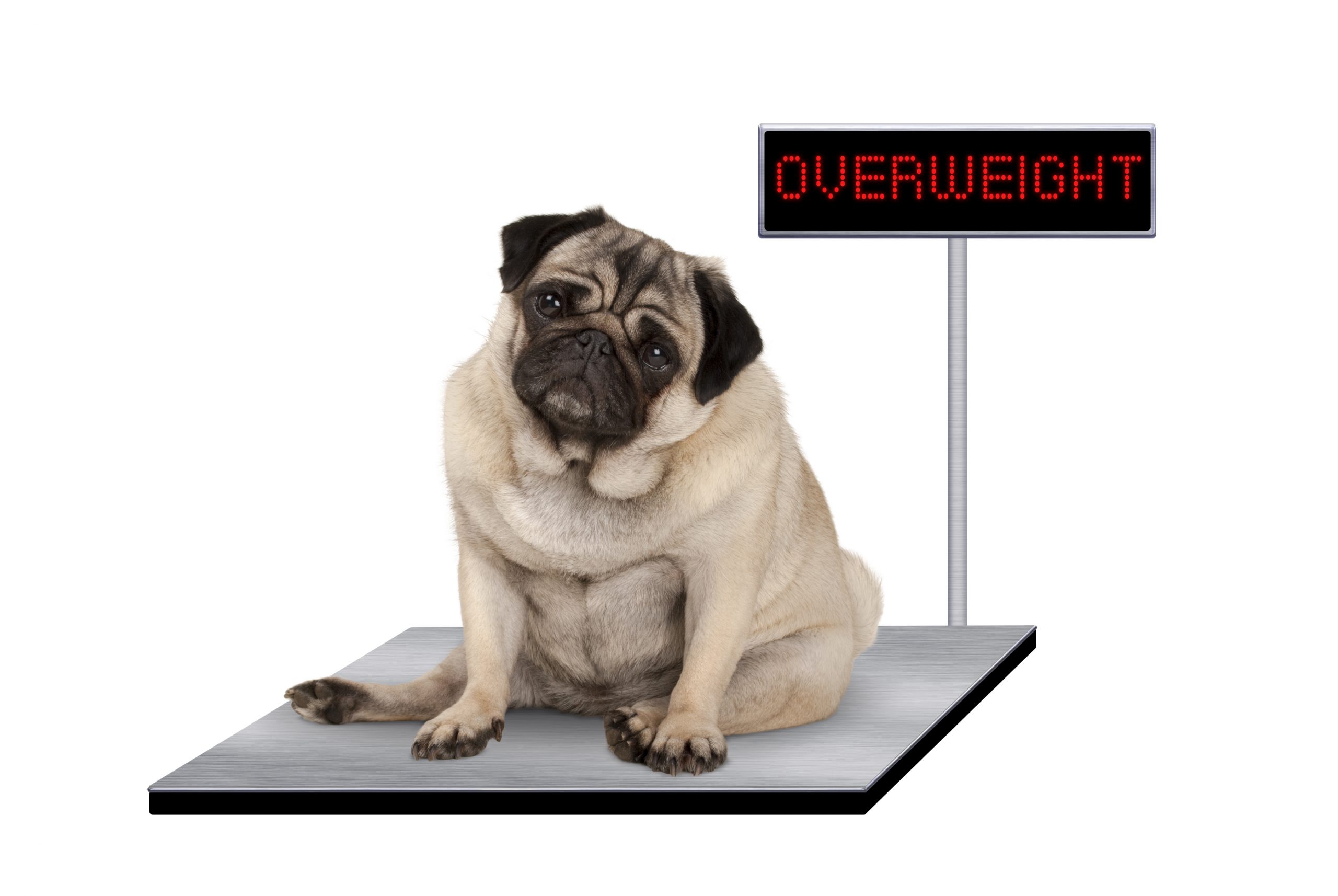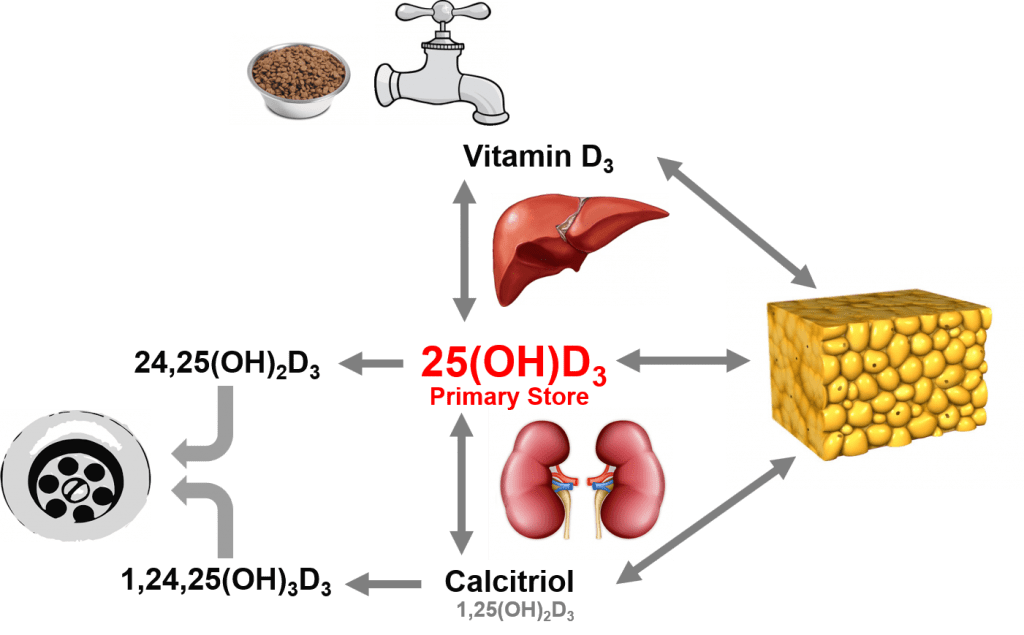
Obesity impacts vitamin D equilibrium. Please review the tech brief below on how it applies to your Test & Treat patients. Contact VDI with any questions.
Background:
Vitamin D undergoes a series of enzymatic reactions ultimately becoming the active hormone calcitriol. However, since vitamin D is fat soluble, it is readily taken up within the adipose tissue. The adipose tissue acts as a buffer or reserve of D3, 25(OH)D3, and calcitriol. In a normal healthy dog or cat it takes 8-10 weeks for equilibrium to re-establish when there are changes in diet and/or D3 supplementation.

In moderately or severely obese animals, the increased amount of adipose tissue dramatically increases this reserve and therefore a longer time is needed for a new equilibrium to develop. In these patients it can take up to 4 months.
In obese patents where weight reduction is sought, a recent study (1) concluded vitamin D status of dogs is not affected by obesity or loss of body fat with therapeutic weight reductionâ€. Therefore, equilibrium is maintained as body mass changes.
Clinical Application:
If diet is being altered to address an obese patient’s weight:
- Establish long term diet
- 4 months after diet starts, test Vitamin D level
- Begin supplementation as recommended on the VDI report
- Retest every 4 months until sufficiency is reached.
- When sufficiency is reached, maintain dose unless diet changes: retest annually.
If diet is NOT being altered to address an obese patient’s weight:
- Test Vitamin D level
- Begin supplementation as recommended on the VDI report
- Retest every 4 months until sufficiency is reached.
- When sufficiency is reached, maintain dose unless diet changes: retest annually.
One Final Comment:
Diet is the primary contributor to vitamin D status in cats and dogs. Any time diet changes, the main source of VitD changes as well. Because of this, long term diet should be set first prior to beginning supplementation to prevent unnecessary testing/changes to dose. This will save your clients money and prevent frustration.
